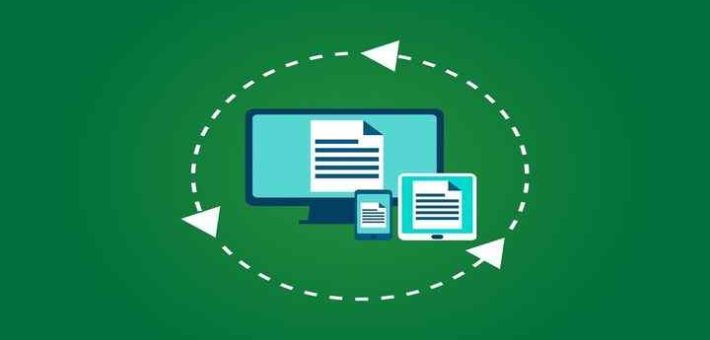More MCQs
HOME
Categories
Business Management
The Communication Process MCQs
The imparting or exchanging of information by Speaking, Writing or using some other medium is called communication. Here on MCQs.club we have designed easy Multiple-Choice Questions (MCQs) on the communication process that fully covers topic like the process of communication with steps, definition, elements, the communication cycle and the 6 stages of the communication cycle with examples. These MCQs are help for Professional Accountancy exams, Business Management exams and Competitive exams.
Communication can be defined as: “The imparting or exchanging of information by
- Speaking
- Writing
- using some other medium
- All of the above
Communication will have an impact on the profitability of an organization which in the extreme could make the difference between success and failure.
- The above statement is correct
- The above statement is incorrect
The key purposes of communication is/are:
- Acquiring information – collecting, analysing, checking and processing numerous types of communication both internal and external to an organisation.
- Disseminating information – sharing information to those who need it to perform their job, make a decision or solve a problem.
- Maintaining relationships – relationships between co-workers and with both suppliers and customers need managing through effective and appropriate communication to ensure continuity of operations and ultimate profitability of the organisation.
- All of the above
In order to maximise its impact which characteristics Communication should demonstrate
- Accurate
- Appropriate media and channel
- Clear with Appropriate language (image and tone)
- All of the above
Internal communication:
- Communication with those from outside the organisation such as customers, suppliers, the press, lobby groups, the Government and banks.
- Communication with those from outside the organisation such as customers, suppliers, the press, lobby groups, the Government and banks.
- Both A&B
- None
External communication:
- Communication with those from outside the organisation such as customers, suppliers, the press, lobby groups, the Government and banks.
- Communication with those from outside the organisation such as customers, suppliers, the press, lobby groups, the Government and banks.
- Both A&B
- None
Direction of communication can be:
- Vertical
- Horizontal (also called ‘lateral’)
- Diagonal
- All of the above
In Vertical communication:
- Managers communicate downwards when issuing instructions and briefing their teams.
- Employees would communicate upwards when reporting back to their managers with updates and results on work performed.
- In a commercial environment this might involve cross-team communication when co- ordinating projects, innovating new ideas or problem solving.
- Both A&B only
Horizontal (also called ‘lateral’) communication
- Occurs between peer groups and people of similar standing.
- May be formal or informal depending on whether it occurs between colleagues and friends.
- Both A&B
- None
Diagonal communication
- Describes the simultaneous combination of vertical and horizontal communication.
- In a commercial environment this might involve cross-team communication when co- ordinating projects, innovating new ideas or problem solving.
- Is used to by-pass blockages in the usual vertical reporting line such as when a line manager is on holiday
- All of the above
A significant amount of communication occurs subconsciously. You don’t need to think about subconscious communication – it happens automatically.
- True
- False
“one cannot not communicate” the absence of a message is a message in itself, even when you think you are not sending a message.
- The above statement is incorrect
- The above statement is correct
The axioms are:
- Inevitability of communication (one cannot not communicate).
- Content and relationship dimensions of communication.
- Irreversibility of communication
- Digital and analogic
- Defining relationships by punctuation
- Symmetric or complementary
- All of the above
- (I) (III) only
- (I) (V) (VI) only
- None
Symmetrical interaction:
- describes interaction based on differences in power between the parties
- describes interaction based on equal power between the parties.
- Both A&B
- None
Complementary interchange:
- describes interaction based on differences in power between the parties
- describes interaction based on equal power between the parties.
- Both A&B
- None
Paralanguage describes the vocal yet non-verbal part of communication. Variances in speed, tone, volume, voice and stress on words can convey different meanings to the recipients in spite of using the same words.
- The above statement is incorrect
- The above statement is correct
Components of the communication process includes:
- Sender
- Encoding
- Receiver/decoding
- Feedback
- All of the above
The “communication channel” is the route by which the message is transmitted from the sender to the recipient.
- True
- False
“Communication Noise” is any kind of interference that damages the actual message that is being sent.
- False
- True
Distortion and noise are often confused and referred to interchangeably as they both result in the same outcome – i.e. the message not being fully understood by the recipient.
- The above statement is correct
- The above statement is incorrect
The sender must appreciate the context in which they are communicating a message in order to ensure they adopt the most appropriate way to communicate information. The appropriate form of communication includes:
- Formal vs. informal
- Confidential vs. non-confidential
- Urgent vs. non-urgent
- Internal vs. external
- (I) and (II) only
- (I) and (IV) only
- All of the above
- None
Which of the following is/are methods of communication?
- Written
- Oral
- Visual
- Pictorial
- All of the above
Examples of types of communication medium include:
- Telephone, Teleconference, Fax
- Videoconference, Face-to-face, E-mail
- Both A&B
- None
Barrier to communication – Any circumstance that prevents the message from being communicated as intended by the sender to the recipient.
- The above statement is true
- The above statement is false
There are many reasons why the message that the sender sends is not the message that the receiver receives and interprets. Barriers might include:
- Issues in the relationship between the sender and receiver that can lead to bias.
- Noise – physical interference that damaged the message as it was being communicated.
- Confusing and conflicting messages leading to distortion.
- Selecting the wrong channel, for example trying to explain a complicated concept with words when a diagram and logical written explanation would be more effective.
- Suffering interruptions and distractions during transmission of the message
- Receiver does not provide feedback.
- Lack of information – for example contextual information that is critical to understanding how to interpret a message
- (I) (III) and (V) only
- (I) (V) and (VII) only
- All of the above
- None
In communication what ICT stands for?
- Interpersonal Communication Techniques
- Intrapersonal Communication Techniques
- Information and communication technologies
- None
ICT “Information and Communication Technologies” refers to technologies that provide access to information through telecommunications.
- True
- False
In recent years the world has become arguably irreversibly reliant on ICT (Information and Communication Technologies) for conducting both personal and business activities. Significant developments that have driven this reliance on ICT include:
- Increased bandwidth – the amount of information that can be communicated at any one time continues to grow rapidly.
- Sophistication and versatility of technologies –multi-use technologies are becoming main- stream in many markets
- New business models
- E-commerce – Developments in ICT including speed, bandwidth, security and accessibility have meant that the world is genuinely becoming a global market-place which changes the way businesses compete.
- All of the above
- (I) and (III) only
- (I) and (IV) only
- None
Despite the trends and benefits of ICT (Information and Communication Technologies) a number of challenges remain that limit the use of ICT in communications. Identify such challenges:
- Both personal and business expense may be prohibitively high to keep pace with rapidly changing technologies.
- People and customers may simply prefer face-to-face communication.
- People and businesses may lack the necessary skills and knowledge about what to buy and how to use it.
- The strength and quality of Internet connections varies substantially around the world.
- Significant (and justifiable) concerns exist around trust and security.
- (II) and (III) only
- (II) and (IV) only
- All of the above
- None
The two key systems of communication are?
- Primary and Secondary
- Internal and External
- Formal and Informal
- None
Internal communication:
- links the day-to-day operations in a business entity.
- Occurs within the same organisation, i.e. between or among officials and employees of the same organisation.
- Exchange of information and messages takes place between organisations and the individuals outside its formal structure.
- A&B only
External communication:
- links the day-to-day operations in a business entity.
- Occurs within the same organisation, i.e. between or among officials and employees of the same organisation.
- Exchange of information and messages takes place between organisations and the individuals outside its formal structure.
- A&B only
Functions of communication includes:
- It controls behaviour of employees, encourages and helps members to interact socially and paves the way for effective decision making.
- Effective communication helps to understand a person or situation in a better way.
- It enables co-workers to resolve differences and build trust and respect in the organisation.
- All of the above
The functions of communication networks include:
- Providing the means for organising the activities of individuals, groups and other sub-units within the organisation.
- Providing instruments for directing the activities of the organisation as a whole.
- Facilitating the exchange of information within the organization
- Ensuring the flow of information between the organisation and the external environment in which it exists.
- All of the above
Identify the types of Formal networks communications.
- Chain network
- Y Network
- Wheel Network
- Circle Network
- All Channel network
- (I) and (II) only
- (I) and (IV) only
- All of the above
- None
Within an organisation, formal networks are not the only communication system; there is also an informal system, known as the Grapevine. Identify the features of Grapevine:
- Information does not flow in a specific direction
- Does not make use of official channels of communication
- Can also be transmitted from one co-worker to another outside the organisation where the colleagues meet socially
- All of the above
—More to come soon—





4 Responses
Good
Hey! Thanks for the feedback buddy.
Thanks Buddy. Helps a lot in revising concepts
Hey Thanks for the valuable feedback!!
More to come soon. Stay tuned.